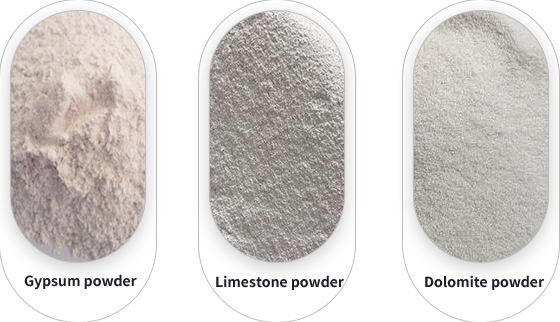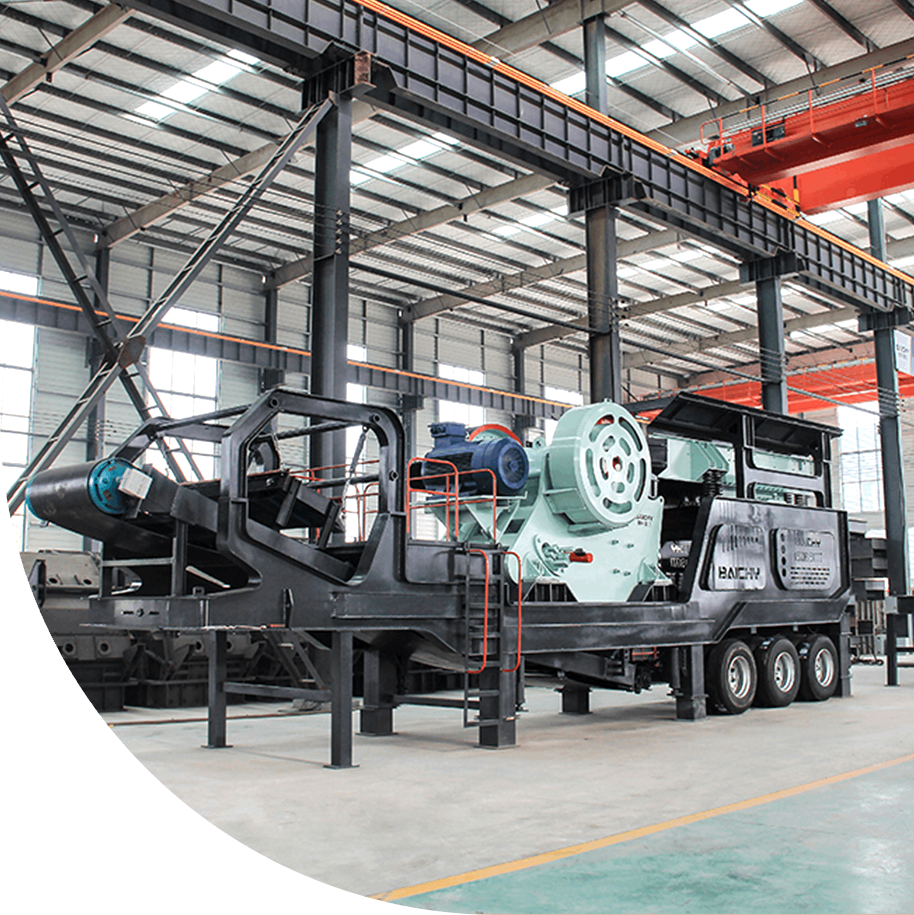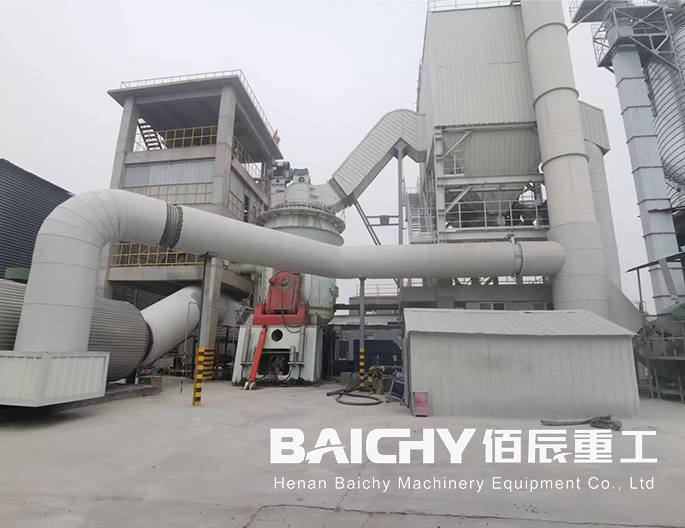
Baichy Heavy Industrial Machinery Co., Ltd

Phone/Wechat/Whatsapp:+008615093222637

Email:[email protected]
24 hours online



Simply put, the efficiency of a vertical cement mill stems from its unique "burden grinding" principle. Unlike the "impact friction" method of traditional ball mills, its process can be summarized as follows:
1. Feeding and Drying: Material is fed into the mill via an air-locked feeder and lands on the center of the rotating grinding disc. Simultaneously, hot air (from kiln exhaust or a hot air furnace) is introduced to instantly dry the material, which has a high moisture content.
2. Crushing and Grinding: Driven by a reducer, the grinding disc rotates, and centrifugal force throws the material toward the edge of the disc. Grinding rollers mounted above the disc, driven by a hydraulic system, exert tremendous crushing pressure on the burden, pulverizing the material.
3. Sorting and Collection: The ground fine powder is lifted by the hot air to the dynamic classifier at the top of the mill. Qualified fine powder passes through the classifier and is collected in a bag filter by the airflow as the Finished product. Unqualified coarse powder is thrown back to the grinding disc for re-grinding. This integrated design of "drying, grinding, and sorting" is the basis for its high efficiency and low energy consumption.
1. Excellent energy efficiency, significantly reducing power consumption: Using a material bed for grinding, energy utilization is extremely high, saving 20%-30% of electricity compared to ball mill systems, resulting in a significant improvement in power consumption per ton of product.
2. Small footprint, low civil engineering costs: The vertical structure makes the equipment compact, occupying approximately 70% of the floor space of a ball mill system, effectively reducing plant and civil engineering investments.
3. Strong drying capacity, wide application range: It fully utilizes kiln exhaust gas and directly processes materials with a moisture content of up to 15%, eliminating the need for a separate dryer. It is particularly suitable for grinding raw materials such as slag and coal.
4. Low operating noise and environmentally friendly: The machine operates smoothly with noise typically below 80 decibels, much lower than that of a ball mill. The entire system operates under negative pressure, minimizing dust leakage.
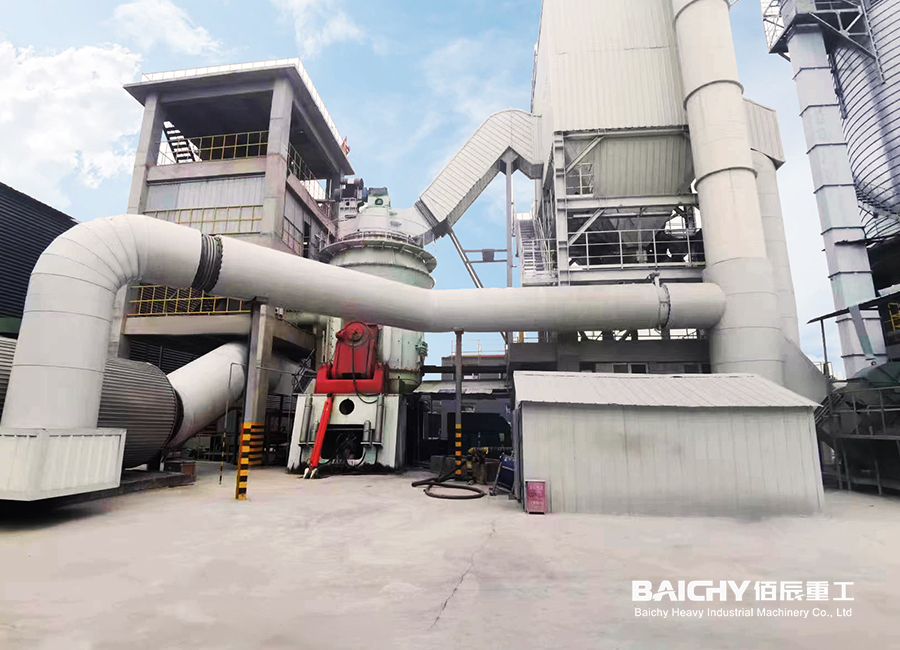
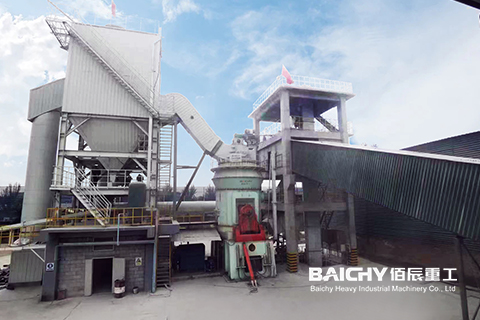
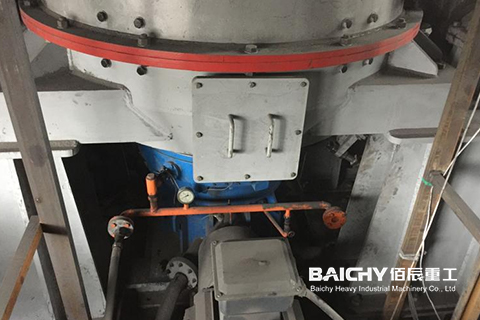
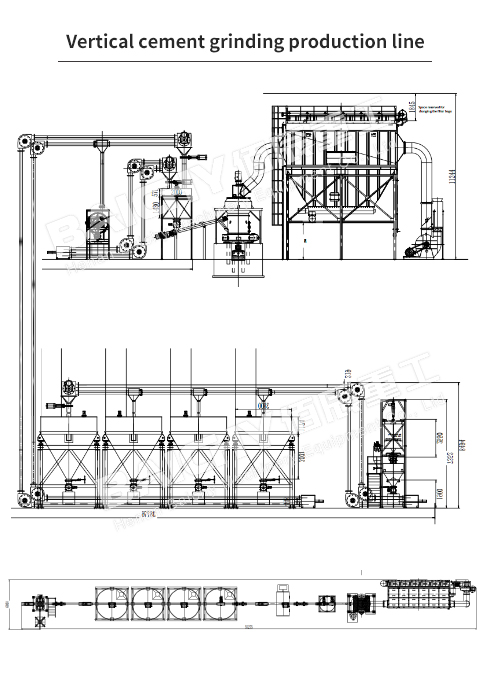
Choosing the right vertical cement mill is crucial to ensuring a positive return on investment. We recommend focusing on the following:
1. Target Output: Determine your desired hourly or annual grinding output.
2. Product Fineness: Define the required finished product fineness (such as specific surface area).
3. Feed Characteristics: Analyze the material's grindability, particle size, moisture content, and other factors.
1. Grinding Rollers and Discs: Inspect their material (e.g., high-chromium cast iron, alloy steel) and wear-resistant finish, as this directly impacts the lifespan of consumable parts and maintenance costs.
2. Hydraulic System: This system is key to providing stable grinding pressure and requires careful consideration for its stability and reliability.
3. Classifier: The performance of the dynamic classifier determines the finished product fineness and particle size distribution, impacting product quality.
| Model | Grinding table dia.(mm) | Max feeding size(mm) | Discharge size(um) | Discharge size(mesh) | Air-in tempreture(℃) | Air-out tempreture(℃) | Input material moisture | Final moisture | Capacity(t/h) | Motor Power(kw) |
|---|---|---|---|---|---|---|---|---|---|---|
| SRM1300 | 1300 | ≤38 | 212-45 | 70-325 | ≤350 | 70-95 | 4-15% | ≤1% | 10-35 | 185-250 |
| SRM1500 | 1500 | ≤38 | 212-45 | 70-325 | ≤350 | 70-95 | 4-15% | ≤1% | 13-48 | 250-355 |
| SRM1700 | 1300 | ≤38 | 212-45 | 70-325 | ≤350 | 70-95 | 4-15% | ≤1% | 18-68 | 355-600 |
| SRM1900 | 1900 | ≤38 | 212-45 | 70-325 | ≤350 | 70-95 | 4-15% | ≤1% | 23-85 | 450-600 |
| SRM2200 | 2200 | ≤38 | 212-45 | 70-325 | ≤350 | 70-95 | 4-15% | ≤1% | 36-135 | 710-1000 |
A: The core differences between the two lie in their grinding principles and energy consumption structure.
Principle: Ball mills rely on the impact and sliding friction of steel balls within a drum to grind, resulting in low energy efficiency. Vertical cement mills, on the other hand, utilize a bed grinding system, where rollers crush a stationary bed of material, resulting in extremely high efficiency.
Energy Consumption: Vertical cement mills typically save 20%-30% in electricity compared to ball mill systems, which is their greatest advantage.
There's no absolute "better," only "more suitable." Vertical cement mills offer significant advantages in energy consumption, floor space, and drying capacity, making them the preferred choice for new production lines and large-scale renovation projects. However, for small-scale operations, frequent product changes, or extremely hard materials, the flexibility and lower initial investment of a ball mill still offer value.
A: Vertical cement mills have a wide range of applications, including:
Cement clinker: produces various grades of Portland cement.
Slag: grinds blast furnace slag to produce high-quality slag powder.
Fly ash: Suitable for grinding fly ash in power plants.
Raw materials: can be used for grinding cement raw meal, limestone, and other materials.
Coal: can be used as a vertical coal mill to produce pulverized coal.
The mill's powerful drying capacity makes it particularly suitable for processing materials with high moisture content, such as slag.
Have Any Questions!
Don't Hesitate To Contact Us AnyTime.
